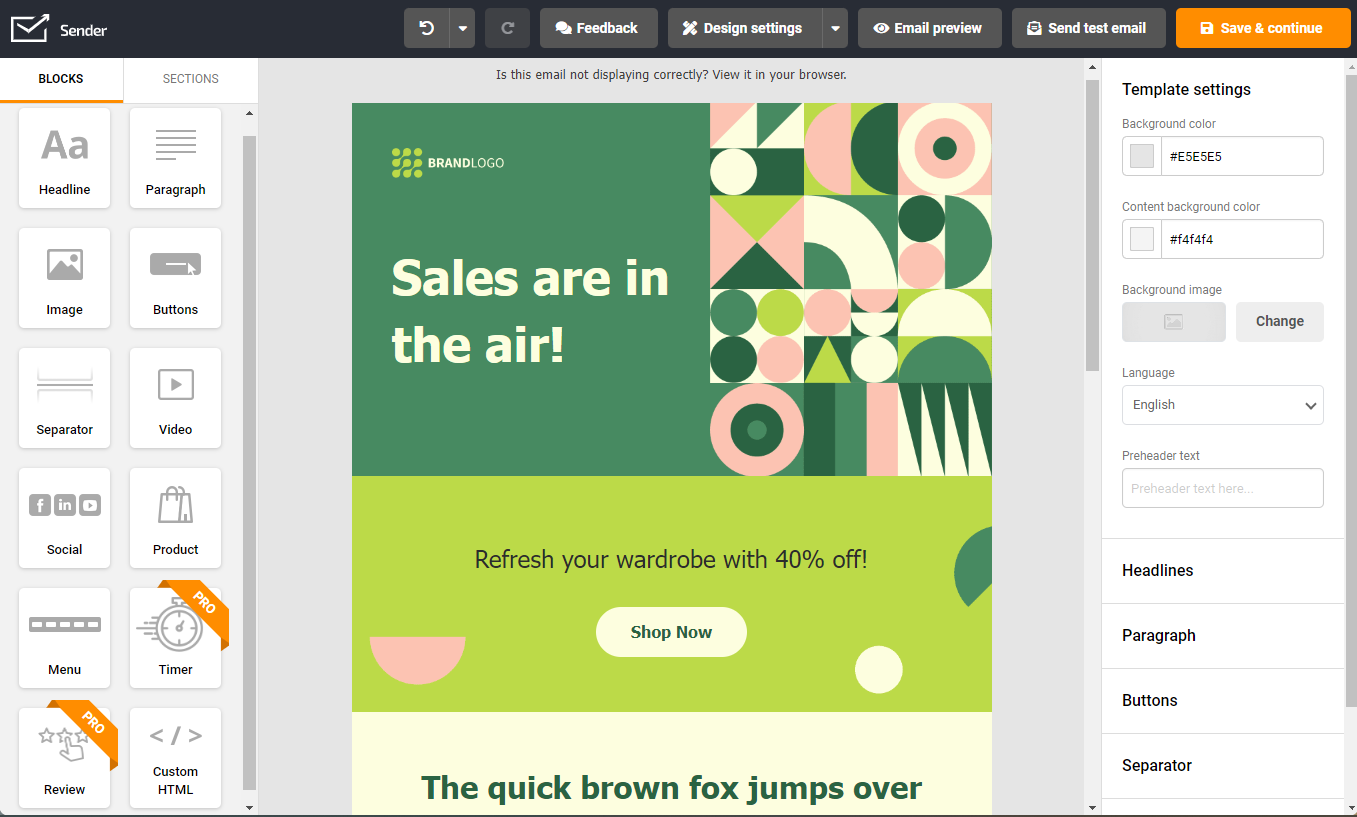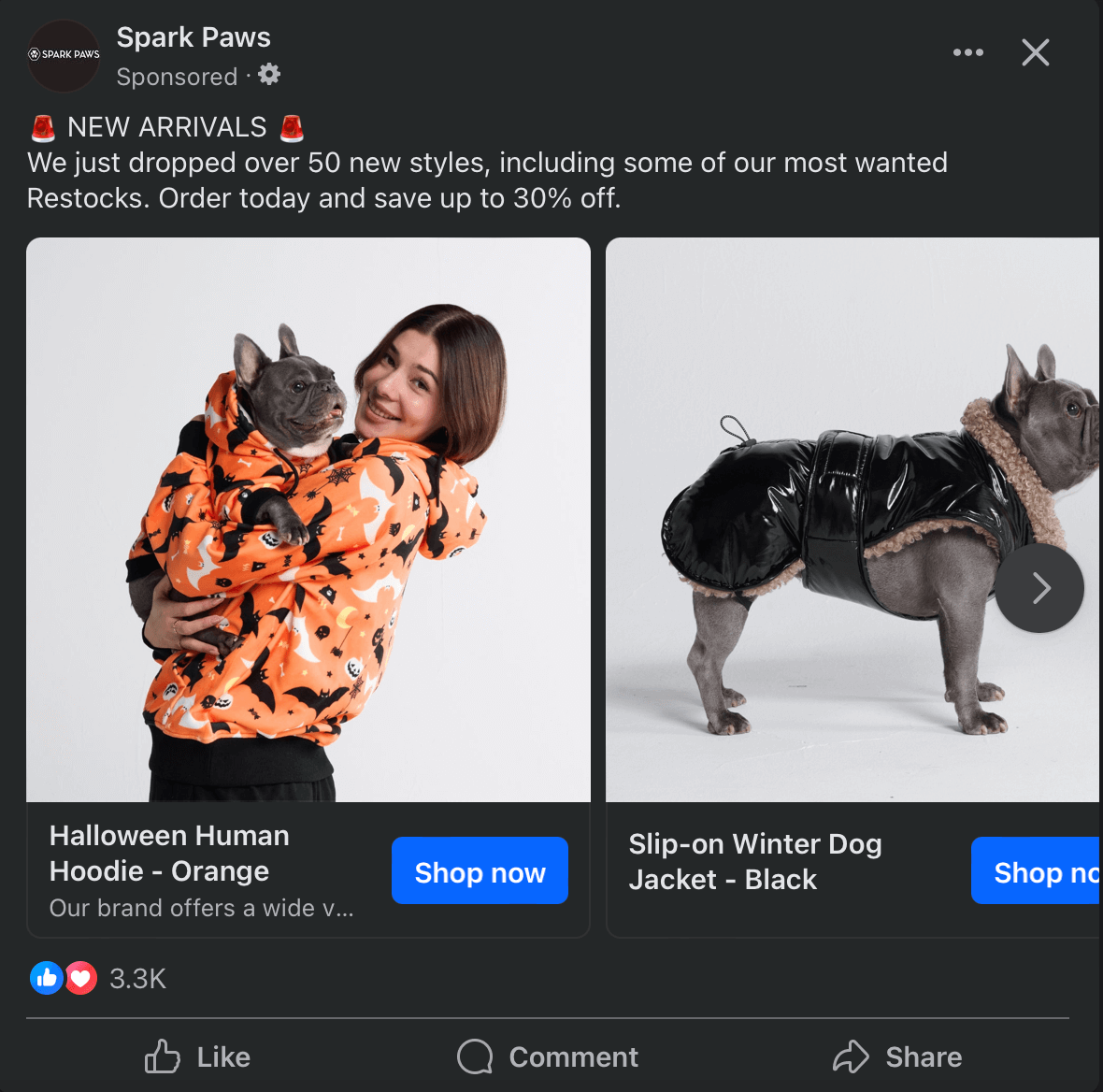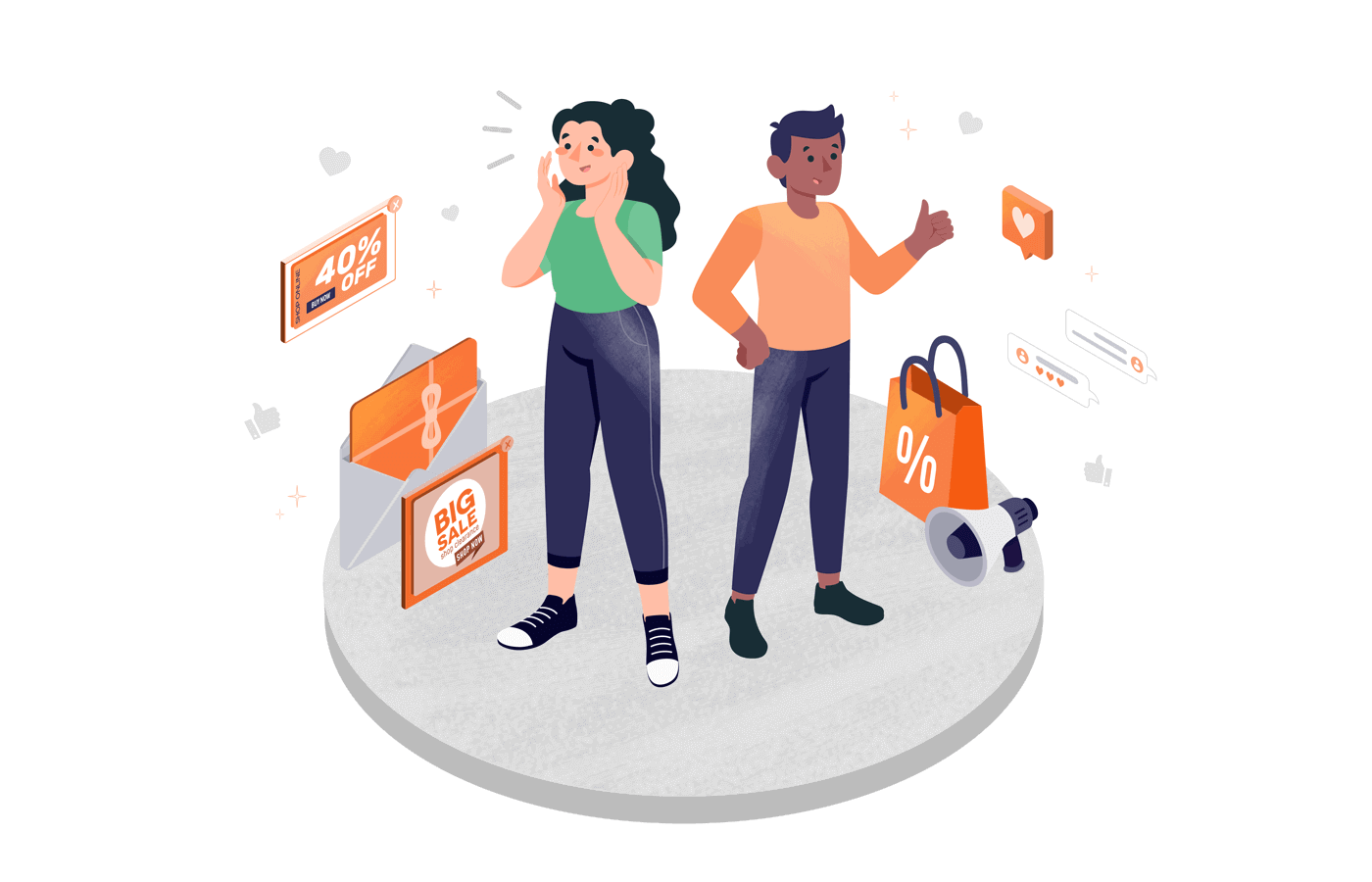B2C marketing often lacks practical guidance, leaving businesses with theories but no clear path to results. This is because many B2C leaders, lacking formal marketing training, struggle to implement effective strategies.
To succeed in the booming ecommerce market, estimated at $6.3 trillion annually, businesses must establish a clear distinction between sales and marketing, especially as they grow.
This article will outline B2C marketing practices to help your business thrive.
What is B2C Marketing?
B2C marketing, short for business-to-consumer marketing, focuses on strategies that businesses use to sell products or services directly to customers, rather than to other businesses like in B2B (business-to-business) case.
B2C marketing campaigns are designed to grab attention, generate interest, and ultimately drive purchases within a typically shorter sales cycle. B2C marketing targets both existing customers and potential clients, aiming to convert them into loyal customers.
B2C Marketing Importance
While some underestimate the power of B2C marketing, its impact is undeniable. It encompasses the strategies brands use to reach their target consumers.
Effective B2C marketing is crucial because it drives awareness and interest, ultimately attracting consumers to your products or services. Don’t mistake it as simply flashy ads and big budgets – strategic B2C marketing considers the fast-paced decision cycle of consumers and uses persuasive techniques to drive sales.
Some key benefits of B2C marketing include:
- Attracting reoccurring sales;
- Building sustainable business and customer relationships;
- Establishing brand identity;
- Positioning your product’s unique value proposition as the industry benchmark;
- Growing a subscriber list;
- Placing your marketing message in front of the right people;
- Helping you identify the proper marketing channels etc.
B2B vs. B2C Marketing
B2C buying decisions don’t depend on logic. Yes, it’s nice to offer services with great features and benefits—but unlike with B2B marketing, don’t base your B2C marketing activities on logic; instead, focus on its emotional appeal.
| B2B Marketing | B2C Marketing |
| B2B marketing is less about showing and more about telling. | B2C is more about showing and less about telling. |
| Higher risk | Lower risk |
| A limited number of customers and prospects | Millions or billions of consumers |
| Long buying cycles | Shorter buying cycles |
| Products and services are often customized for specific buyers | Off-the-shelf products and services |
| Analytical purchase process | Emotional factors play a role |
| Requires case studies, whitepapers, content marketing, SEO, etc. | Requires influencer marketing, email marketing, PPC, SMS, etc. |
B2C Marketing Channels
If you want your B2C marketing sales to funnel and lead generation strategies to yield good results, you must first distribute your content through the proper channels. So let’s sneak peek at some of the most widely recognized B2C marketing channels.
Email Marketing
Email marketing involves sending targeted, personalized messages to a list of subscribers interested in your brand. It’s a powerful tool for B2C businesses because it allows you to:
- Deepen customer relationships. Share valuable content, promotions, and updates that keep customers engaged;
- Increase sales. Promote products or services directly to a receptive audience;
- Build brand awareness. Keep your brand top-of-mind and foster loyalty;
- Segment audiences. Tailor messages for specific demographics or customer behaviors, leading to higher engagement;
- Enjoy cost-effectiveness. For every dollar spent, email marketing generates an average ROI of $36.
And the best part? You can start already today and see immediate results. Especially if you choose an email marketing platform like Sender. Here, you can grow your email list in no time with popups and send your subscribers stunning campaigns.
Choose one of Sender’s beginner-tested templates and personalize them in minutes with the intuitive drag-and-drop builder.

Learn more about email marketing and customer segmentation here:
Social Media
Think of social media marketing as your brand’s chance to have a conversation with your target customers on their turf – social media platforms like Instagram, Facebook, and X.
By using creative marketing tactics, from captivating organic content to laser-focused online advertising, you can build relationships, spark interest, and turn followers into loyal customers.
PPC
Your website can be a powerful tool for attracting customers, but only if they can find it. This is where search engine marketing (SEM) comes into play.
One popular SEM strategy is pay-per-click (PPC) advertising, where you essentially bid on keywords related to your business. When someone searches for those keywords, your ad might appear at the top of the search results page. You only pay when someone clicks on your ad, making it a cost-effective way to drive targeted traffic to your website.
SEO
Search engine optimization is all about keyword placement and content creation. This B2C marketing channel positions your product or services as an industry benchmark — guaranteeing a truckload of unique visitors.
A well-optimized website ranks better in search engines — placing your marketing message in front of the individuals that need to see it.
Top Challenges Faced in B2C Marketing
While, no doubt, extremely beneficial, B2C marketing has its own set of unique challenges:
- Data overload and privacy. B2C marketers are inundated with customer data, but using it effectively while respecting privacy regulations is a constant challenge;
- Attributing success across multiple channels. Customer interactions span websites, social media, email, and more, making it difficult to understand which touchpoints drive conversions and prove marketing ROI;
- Building a sustainable business model. Balancing customer acquisition costs with lifetime value is crucial, especially in competitive markets;
- Optimizing the sales funnel for a shorter cycle. B2C purchases often happen quickly, so marketers must create a frictionless funnel that rapidly moves leads towards conversion.
Creating Effective B2C Marketing Strategy
Before diving elbow-deep into B2C marketing, you must have a plan. Without a strategy, you’re as good as shooting a black target in the dark. Here are the steps to creating it:
- Understand your target audience
You can’t market effectively if you don’t know who you’re talking to. Go beyond basic demographics and dig deep into what makes your ideal customer tick. What are their needs, desires, and pain points? Where do they hang out online?
Create detailed customer profiles to represent your target audience. This will help you focus your marketing efforts on the right people with the right message, just like talking directly to a friend.
- Define clear marketing objectives
What do you want to achieve with your marketing? Do you want to boost brand awareness, sell more services directly to consumers, or build stronger customer loyalty with existing customers? Define specific, measurable, achievable, relevant, and time-bound (SMART) goals.
For example, aim to increase website traffic by 15% this quarter or boost sales of a particular product by 20% in the next six months. Having clear goals keeps your marketing on track and helps you measure success.
- Create engaging content
Content is the heart of your marketing. Create valuable, engaging content that resonates with your audience at each marketing funnel stage. Think blog posts, videos, social media updates, and email newsletters that address customer needs and provide solutions. Offer free trials or demos to showcase the value of your products.
- Embrace multi-channel marketing
Don’t put all your eggs in one basket. Use a mix of online and offline channels to connect with your audience where they’re most active. Think social media, email, SEO, push notifications, paid ads, events, and even good old-fashioned print media. This multi-channel approach maximizes your reach and impact.
- Measure and analyze campaign performance
Marketing isn’t a guessing game. Use analytics tools to track key metrics like website traffic, lead generation, conversion rates, and customer lifetime value (CLV). This data tells you what’s working and what’s not, allowing you to adjust your strategies and improve results.
- Optimize the customer journey
The customer journey is every interaction a customer has with your brand. Analyze customer data and feedback to identify areas for improvement.
Streamline your checkout process, personalize communication, offer exceptional customer support, and implement loyalty programs to build lasting relationships with your customers. A positive customer experience leads to happy, loyal customers who spread the word about your brand.
B2C Marketing Examples
There are plenty of B2C marketing campaign to choose from, so we’re sharing the best ones we’ve seen today:
Email Marketing by Rebel Rabbit
Your inbox is likely filled with B2C marketing emails, like Rebel Rabbit’s back-to-school campaign. What makes it stand out? The consistent theme throughout the email. This creates a strong sense of relevance and effectively demonstrates how the brand’s products address recipients’ needs.

Key takeaways:
- Tie your email content to current events and holidays to instantly grab attention;
- Ditch the product bragging and showcase how your offering solves your recipients’ problems or improves their lives;
- Always include a clear call-to-action, telling your audience exactly what you want them to do next.
Social Media by Spark Paws
Carousel ads are a great way to showcase your products on social media platforms and mobile apps. These ads feature a series of images, each with its own description and call-to-action button. Spark Paws’ example shows how effective they can be. They use vibrant product images, emojis to add personality, and copy that creates a sense of urgency.

Key takeaways:
- Use attention-grabbing images to stand out from generic product pictures;
- Ensure you give a reason for people to check your products in the ad description;
- Target the people who are most likely to be interested in your products.
PPC by Temu
As a chill breeze reminds you fall is approaching, a well-deserved break at 4 p.m. finds you googling “autumn coats”, eager to see what online retailers have to offer.
The first thing you see? A sponsored ad mentioning the keyword you’ve used. It’s the so-called PPC ad and in a two line text it manages to list all the reasons why you should shop at the brand that made it. Here’s an example from ecommerce giant Temu that’s almost too familiar:

Key takeways:
- Use strong verbs, create a sense of urgency, and incorporate keywords naturally;
- Ensure a seamless customer journey by directing people to a page specifically designed for that product or offer;
- Monitor your key performance indicators (KPIs) to make continuous improvements to your campaigns.
SEO by Alpaca Collections
After finally finding the perfect autumn coat online, the need for a new scarf leads to a “alpaca wool scarf” Google search, revealing a sea of results and raising the question: how does Google determine website ranking? Hint: it’s SEO.
Take Alpaca Collections, for example. They’ve snagged that coveted top spot because their website is a well-oiled SEO machine. By seamlessly incorporating your searched keywords and related terms throughout their site, they’ve sent a clear signal to Google: “We’ve got the alpaca wool scarves you’re searching for!”

Key takeaways:
- Treat each product page as a mini-landing page optimized for specific keywords;
- Make it easy for both search engines and users to navigate your site;
- Attract your target audience by creating valuable content related to your products and niche.
Eager to learn more? Here are some hand-picked articles to move further:



